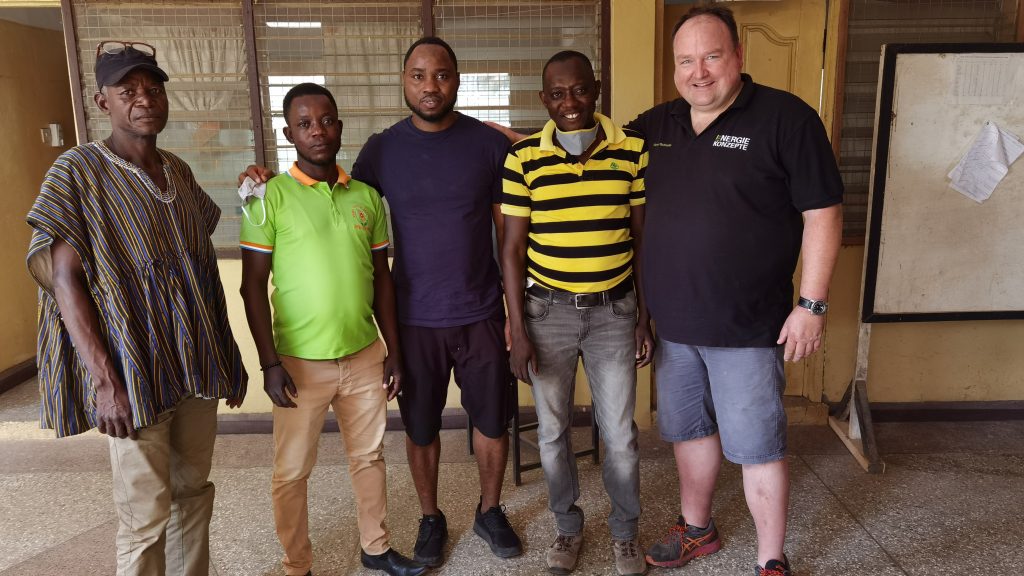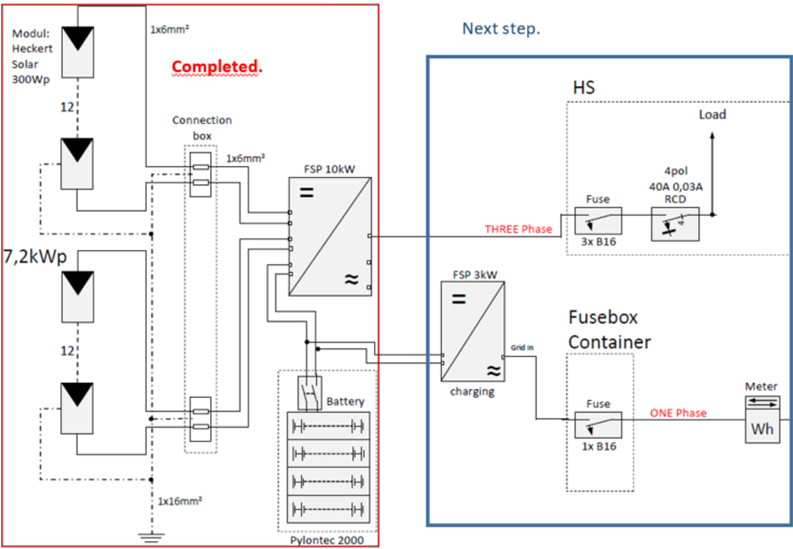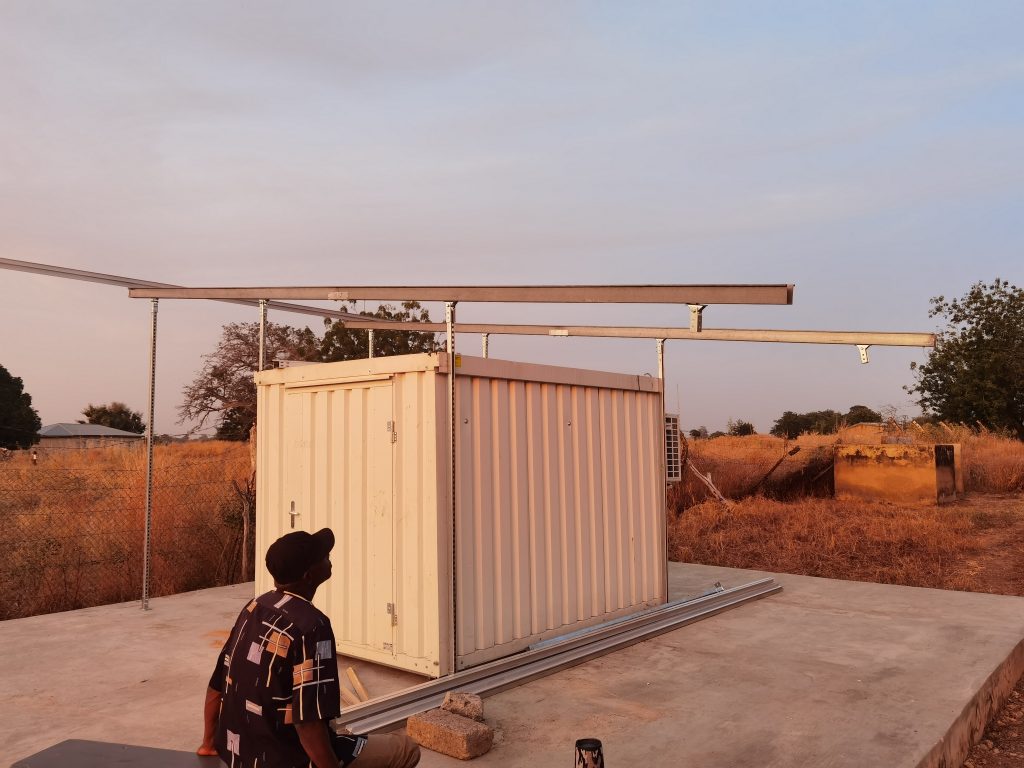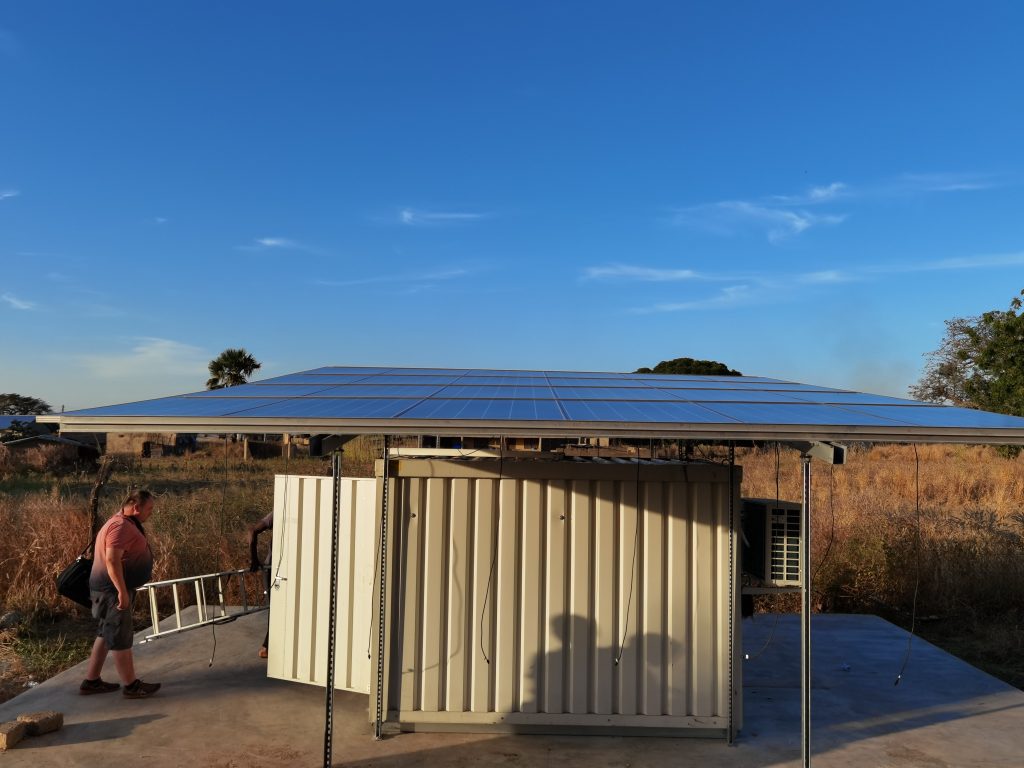Interview with Mohammed Abass from WestfalenWIND. He talks about his role in the EnerSHelF project and the challenges they faced when setting up a Photovoltaic-hybrid system at the pilot site at Kologo.
You recently joined the EnerSHelF project through its industry partner WestfalenWIND. Can you tell a bit about your professional background and role within the project?
I completed my B.Sc. in Physics at Kwame Nkrumah University of Science and Technology (KNUST), Ghana, in 2012. In 2014, I came to Germany to do my master’s degree at University of Duisburg-Essen and now hold a M.Sc. in Mechanical Engineering. My studies were based within the internationally oriented study program International Studies in Engineering (ISE) and I specialized in energy and environmental engineering.
My role within the EnerSHelF project is to assist in setting up a photovoltaic (PV)-hybrid system at the pilot site in Kologo, Ghana. Additionally, I help to promote user acceptance of PV systems as well as its optimal usage. That also entails to enhance the understanding of sustainable electricity generation across the community. I think that if you want to bring new things to places or people, it is important to create the right access. Encouragingly, I noticed that the acceptance for PV systems in Kologo is already very high. Another part of my role within the project is the documentation of the process of setting up the PV-hybrid system in Kologo.
Your work package has the objective to promote user acceptance of PV-based energy solutions. How do you plan to achieve this goal?
We want to achieve that goal by involving the local community but also the staff at the health centre in our daily tasks during our stay in Kologo. Another important step is to explain the basic function of PV and how the free energy of the sun is used to create electricity. Additionally, we explain the optimal consumption of this electricity but also highlight the importance of PV usage for the reduction of global CO₂ emission. To help with the optimal usage of the power generated, a display will be set up at the PV-hybrid system. It will help the hospital staff to know when to maximise usage of electricity but also when to minimise it.
In November, WestfalenWIND was able to travel to Ghana for the first time in months. What were the biggest challenges you faced during your time in Ghana?
We faced smaller and bigger challenges during our time in Ghana – mostly affiliated with the remoteness of Kologo. For instance, we could not find a place to stay near the project site. We had to stay in Bolgatanga (also known as Bolga), which is a 1:40 hour drive to Kologo. This caused some delays, as our driver had to pick us up from the hotel to bring us to the pilot site. The same problem occurred for practicalities such as getting lunch. As Kologo is a remote village with no restaurants or shops, we had to drive for 30-35 min to the town Navrongo to find a place to eat. But also some materials and parts for the project were hard to find in Kologo. For example, we went looking for metal brackets, concrete screws, and metal paint for coating the brackets against rust. We were lucky to get the brackets in Navrongo and the metal paint in Bolga, but we could not get the concrete screws. Therefore, what we did is to improvise.

However, the main challenge that interrupted us from connecting the PV-power system to the health centre was the connection to the meter that measures the amount of electric energy taken from the grid by the hospital. The inverter we had for our PV-hybrid setup is a 3-phase inverter and the meter of the hospital uses a single-phase inverter, which made the connection impossible at that time. Applying for a 3-phase meter from the Electricity Company of Ghana would have taken too much time and we had to leave it like it was for the moment.
What are the next steps for your working group now that you have set up the PV-hybrid system in Kologo?
The next step is to complete the connection of the power supply (PV-hybrid system) to the Kologo health centre. We want to stick to the single-phase grid connection to reduce cost but connect the health centre in 3-phase via the already installed 10 kW inverter. To achieve this, the single-phase from the grid will be fed into the battery of the PV-hybrid system through a second 3 kW inverter when required. This way, we charge the battery from the grid, whenever the input from the PV is too low.

The second inverter (3 kW) stops charging when the charge status is full again. The larger inverter of 10 kW will constantly take power from the battery and supply both buildings of the health centre with 3-phase current. With this structure, 230V and 50Hz will always be present at the health centre, no matter what voltage arrives from the main supply.
When the installation is completed, we will focus on the development of the display that is meant to guide the users of the power generated. The users must understand what form and amount of electricity consumption is possible and how they can be more efficient. In parallel, we will optimise the container and adapt it to the needs of the facility to be able to develop an optimal product.
Mohammed Abass holds a M.Sc. in Mechanical Engineering from University of Duisburg-Essen, Germany, and a B.Sc. in Physics from Kwame Nkrumah University of Science and Technology, Ghana. In his master’s program, he specialized in Energy and Environmental Engineering and wrote his master’s thesis at WestfalenWIND, where he modified a 40ft. cooling container into an off-grid cooling container that was powered by Photovoltaic (PV)-hybrid system. For the EnerSHelF project, he now supports WestfalenWIND in setting up the PV-hybrid container at the pilot site in Kologo.



